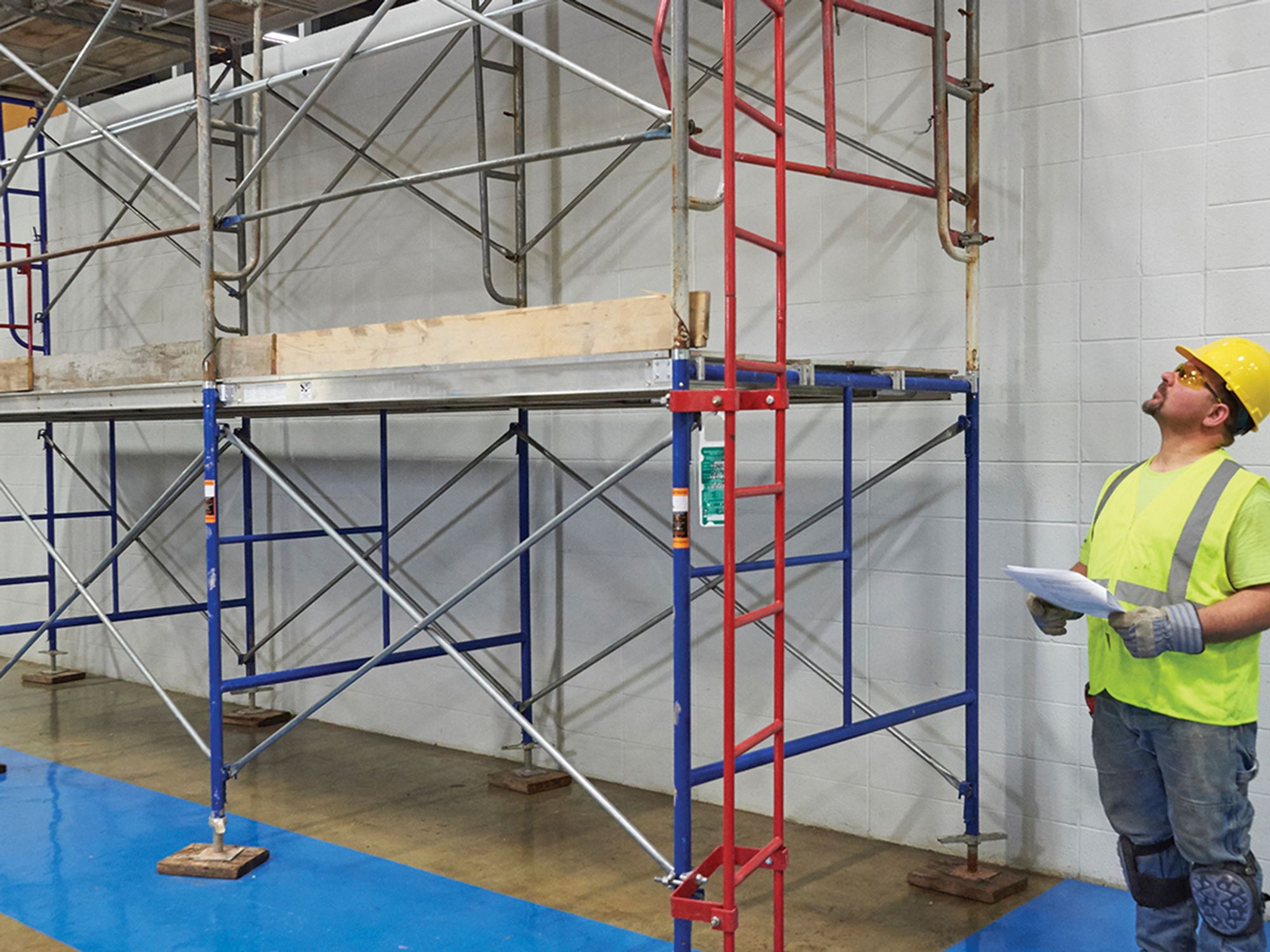Requirements for specific types of people

- OSHA defines a competent person as someone who can identify hazards in the relevant working conditions and has authorization to correct them and requires a competent person to be in charge of training and inspection.
- OSHA defines a qualified person as someone with a recognized degree/certification or equivalent demonstrated experience and requires a qualified person to perform certain design and training duties.
- Certain types of especially hazardous scaffolds and components must be designed by a registered professional engineer.
While “competent” and “qualified” ideally apply to everyone in a workplace, the Occupational Safety & Health Association (OSHA) specifies particular definitions for these adjectives and assigns different scaffolding responsibilities to each.
Competent person requirements
OSHA defines a competent person as “one who is capable of identifying existing and predictable hazards in the surroundings or working conditions, which are unsanitary, hazardous to employees, and who has authorization to take prompt corrective measures to eliminate them.” (1926.32)
The scaffolding standard requires a competent person to perform the following duties under these circumstances:
- In general:
- Select and direct employees who erect, dismantle, move, or alter scaffolds.
- Determine if it is safe for employees to work on or from a scaffold during storms or high winds and to ensure that a personal fall arrest system or wind screens protect these employees.
- Note: Windscreens should not be used unless the scaffold is secured against the anticipated wind forces imposed.
- For training:
- Train employees involved in erecting, disassembling, moving, operating, repairing, maintaining, or inspecting scaffolds to recognize associated work hazards.
- For inspections:
- Inspect scaffolds and scaffold components for visible defects before each work shift and after any occurrence that could affect the structural integrity, and authorize prompt corrective actions.
- Inspect ropes on suspended scaffolds prior to each work shift and after every occurrence that could affect the structural integrity, and authorize prompt corrective actions.
- Inspect manila or plastic (or other synthetic) rope being used for top rails or mid rails.
- For suspension scaffolds:
- Evaluate direct connections to support the load.
- Evaluate the need to secure two-point and multi-point scaffolds to prevent swaying.
- For erectors and dismantlers:
- Determine the feasibility and safety of providing fall protection and access.
- Train erectors and dismantlers to recognize associated work hazards.
- For scaffold components:
- Determine if a scaffold will be structurally sound when intermixing components from different manufacturers.
- Determine if galvanic action has affected the capacity when using components of dissimilar metals.
Qualified person requirements
OSHA defines a qualified person as “one who by possession of a recognized degree, certificate, or professional standing, or who by extensive knowledge, training, and experience has successfully demonstrated the ability to solve or resolve problems related to the subject matter, the work, or the project.” (1926.32)
The standard requires a qualified person to perform the following duties in these circumstances:
- In general:
- Design scaffolds and load them in accordance with the design.
- For training:
- Train employees working on the scaffolds to recognize the associated hazards and understand procedures to control or minimize those hazards.
- For suspension scaffolds:
- Design the rigging for single-point adjustable suspension scaffolds.
- Design platforms on two-point adjustable suspension types that are less than 36 inches wide to prevent instability.
- Make swaged attachments or spliced eyes on wire suspension ropes.
- For components and design:
- Design scaffold components and direct their construction in accordance with the design.
Registered professional engineer requirements
The standard requires a registered professional engineer to perform the following duties in these circumstances:
- For suspension scaffolds:
- Design the direct connections of masons’ multi-point adjustable suspension scaffolds.
- To design:
- Scaffolds that are to be moved when employees are on them.
- Pole scaffolds over 60 feet high.
- Tube and coupler scaffolds over 125 feet high.
- Fabricated frame scaffolds over 125 feet high above their baseplates.
- Brackets on fabricated frame scaffolds used to support cantilevered loads in addition to workers.
- Outrigger scaffolds and scaffold components.
